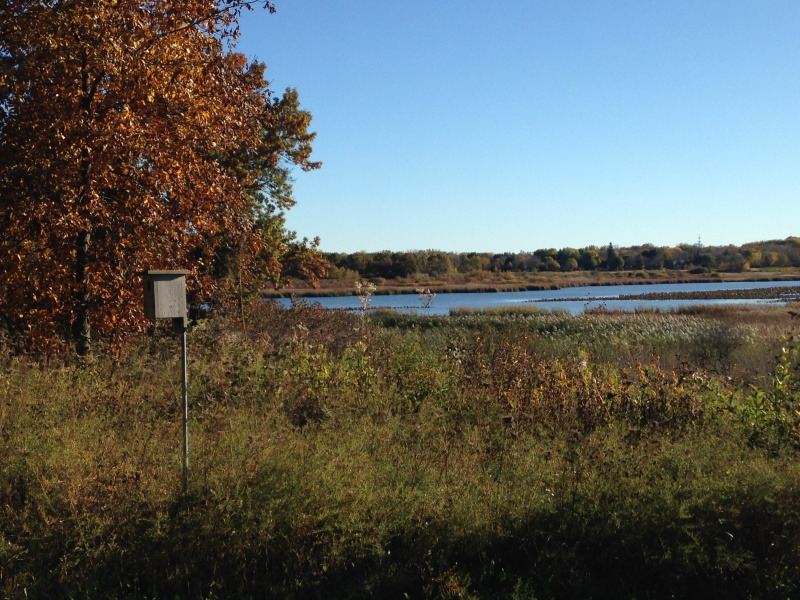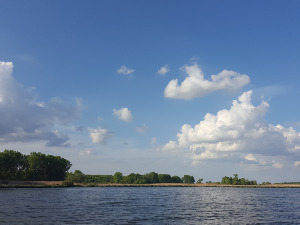
Cherokee Marsh Regulates Water Flow to Yahara Lakes and Provides Habitat for Native Wildlife

by Mariama Bah, age 13
Cherokee Marsh is home to a variety of flora and fauna that thrive in this unique and significant ecosystem. The marsh is also a very important part of Dane County’s natural environment.
Trees are especially scarce in marshes. Instead, these wetlands boast an abundance of herbaceous plants. Common plants at Cherokee Marsh include cattails, sago pondweed, and hard stem bulrush. This site also supports several rare plant species such as glade mallow, white ladyslipper, and tufted bulrush. Many mammals, reptiles, birds, and amphibians live in the marsh.
The animals and plants that thrive in Cherokee Marsh are a part of a precise and very special ecosystem. There are some invasive species, however, that threaten the native species at the Cherokee Marsh site. The Dane County Land and Water Resources Department (LWRD) has taken efforts to remove carp, which cause destruction by uprooting the aquatic plants and sediment.
Conservation efforts for Cherokee Marsh came to the attention of the public in 1968, when Ruth Baumann of the Institute of Governmental Affairs at the UW-Extension published a paper about the history of Cherokee Marsh. Her paper highlighted the need to protect the marsh. Since then, the Dane County has launched several conservation efforts.
John Reimer, the assistant director of Dane County LWRD, is very interested in Cherokee Marsh and the role it plays in the local environmental system.
“Most of the acres of lost wetland occurred from creating Cherokee Lake. Our intent is not to restore all the marsh land back to what it was but to protect the wetland from eroding even further,” Reimer says.
For example, one Dane County conservation project is
working to prevent sediment buildup.
The hope is to alleviate erosion, which can degrade the marsh and prevent it from playing its natural role in the Yahara River ecosystem.
Cherokee Marsh is not only home to thousands of animals and plants, but also provides crucial water quality protection and flood control for the City of Madison and other areas around the Yahara River and Dane County’s lakes. This large marsh area stores water and slows the flow of water going to Lake Mendota during large rain events. In the event of a flood, like that of summer 2018, when Madison was devastated by flooding, marsh areas play a key role. So, efforts to remove sediment mitigate flood risk.
The marsh is also a recreational and educational site where students and families can learn about and enjoy the natural environment. Native American culture and history is also evident in the area. Cherokee Marsh is home to numerous Ho-Chunk effigy mounds that are available for viewing.
Various efforts to protect Cherokee Marsh continue. Dane County is currently working on ways to prevent carp from entering the marsh and investigating methods such as using barriers and traps to keep them out. Scientists and experts are researching the migration patterns of the carp to figure out when the carp enter and leave the marsh.
[Sources:
Wisconsin Wetlands Association
;
Friends of Cherokee Marsh; Northside News; Interview with John Reimer
]

